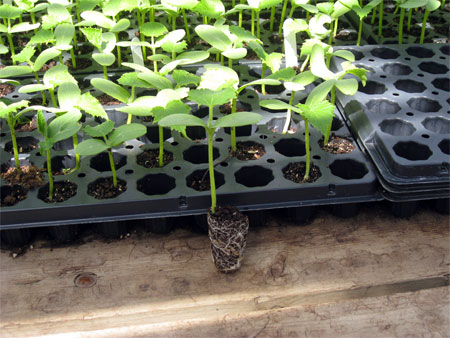Proper transplant hardening off may be a deal breaker for your season
Transplant hardening improves adaptability to extreme weather conditions like cool or hot temperature, water stress and high winds.
The use of transplants in vegetable production provides multiple benefits including earliness, disease-free planting materials and uniform crop stand. Transplants are generally produced in the greenhouse using special growing media and trays. Growing conditions in the greenhouse – fertilization, irrigation, light, temperature, relative humidity, wind – are near-optimum, resulting in seedlings with very tender and fragile tissue. Therefore, transplants that are moved directly from the greenhouse to the field undergo a significant stress that may severely affect establishment and performance.
To minimize this stress, also called “transplant shock,” transplants should be subjected to the “hardening” process prior to transplanting. Hardening off of transplants in the greenhouse is achieved by reducing progressively the amount and frequency of the irrigation and by reducing greenhouse temperature by 5 to 10°F. If greenhouse temperature reduction is not possible, withholding water should provide acceptable results. Alternatively, transplants can be hardened by moving them from the greenhouse to a lath house for progressive adaptation to outside conditions. Whether conducted directly in the greenhouse or in a lath house, the hardening process should take 7 to 14 days prior to transplanting. It is not recommended to use nutrient stress as a process for hardening vegetable transplants.

Transplant hardening.
Hardening improves transplant resilience by reducing its growth rate, thickening the cuticle, increasing tissue dry matter content which reduces the amount of freezable water, and increasing the amount of anthocyanins (pink pigments) in the shoot. These physiological and biochemical changes improve adaptability of the transplants to extreme weather conditions like cool or hot temperature, water stress, high winds, direct sun exposure, and nutrient stress. For vegetables like cabbage, tomato, lettuce and eggplant, the development of a pink color in the stem, petioles and veins is a good indication that the transplants are ready to withstand adverse field conditions.



 Print
Print Email
Email


